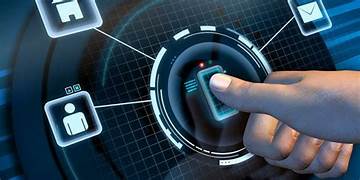How Biometric Controls Could Change the Way We Fly Drones
As drone technology advances, traditional methods of controlling UAVs are being reimagined. Currently, most drones are operated using physical controllers or mobile applications, but emerging biometric technologies could revolutionize the way we interact with UAVs. By integrating biometrics—such as fingerprint recognition, eye tracking, voice commands, and brain-computer interfaces—drones could become more intuitive, secure, and efficient. This innovation has the potential to enhance security, improve user experience, and even enable individuals with physical limitations to control UAVs effortlessly.
Biometric technology relies on unique physical or behavioral characteristics, such as fingerprints, facial recognition, or brainwave activity, to authenticate and control devices. In drone operations, this could eliminate the need for passwords or manual controllers, making UAVs easier and safer to operate. Fingerprint and facial recognition could be used to secure drone access, preventing unauthorized users from taking control. Eye-tracking technology, which detects a user’s gaze, could enable pilots to navigate drones simply by looking in a specific direction. Similarly, voice recognition could allow users to issue spoken commands, such as "take off" or "land," making drones more responsive and hands-free.
One of the most futuristic applications of biometrics in drone control is brain-computer interfaces (BCIs). This technology uses sensors to detect brainwave patterns and translate them into commands, allowing users to control drones with their thoughts. Though still in the early stages of development, BCIs could completely transform UAV operation, making it possible for individuals with mobility impairments to fly drones without the need for physical controllers.
Biometric controls offer several advantages, including enhanced security, hands-free operation, and improved accessibility. By ensuring that only authorized users can operate a drone, biometric authentication reduces the risk of hacking or unauthorized access. Hands-free control methods such as voice recognition and BCIs eliminate the need for traditional controllers, making drone piloting more intuitive and efficient. Furthermore, these technologies can make drones more accessible to individuals with disabilities, expanding the range of people who can benefit from UAV operations.
Despite these promising developments, challenges remain. Accuracy and response time are critical factors that must be refined before biometric controls can become mainstream. Environmental factors, such as poor lighting affecting facial recognition or background noise interfering with voice commands, could impact performance. Additionally, privacy concerns regarding the collection and storage of biometric data need to be carefully managed.
As technology continues to evolve, biometric controls will likely become more refined and reliable, paving the way for a new era of UAV operation. The integration of biometrics into drone technology represents a significant step toward making UAVs smarter, more secure, and more responsive to human input. In the near future, we may see drones that seamlessly respond to eye movements, voice commands, or even thoughts, transforming the way we interact with UAVs and unlocking new possibilities across various industries.
.png)






Leave a Comment
Your email address will not be published. Required fields are marked *